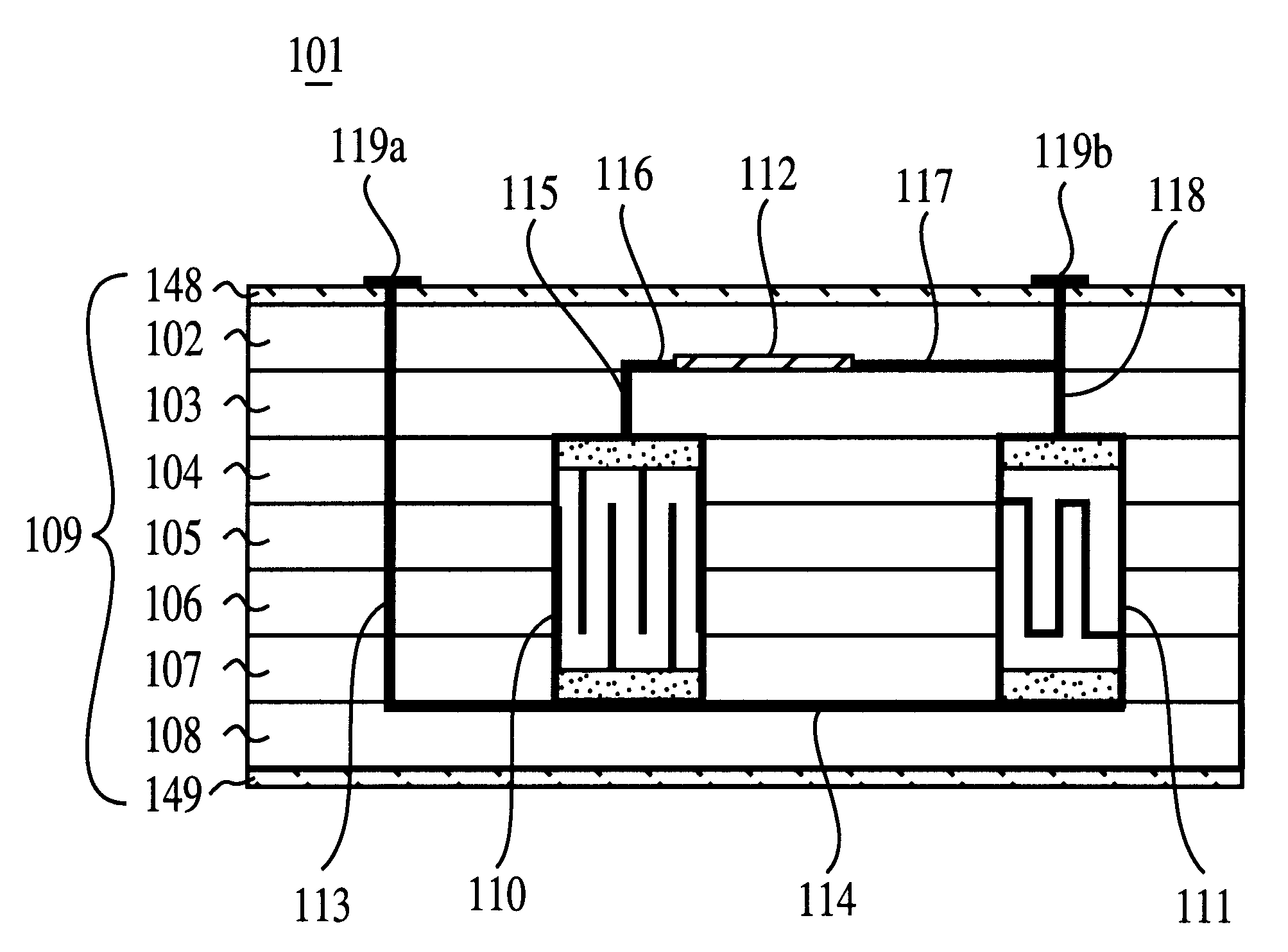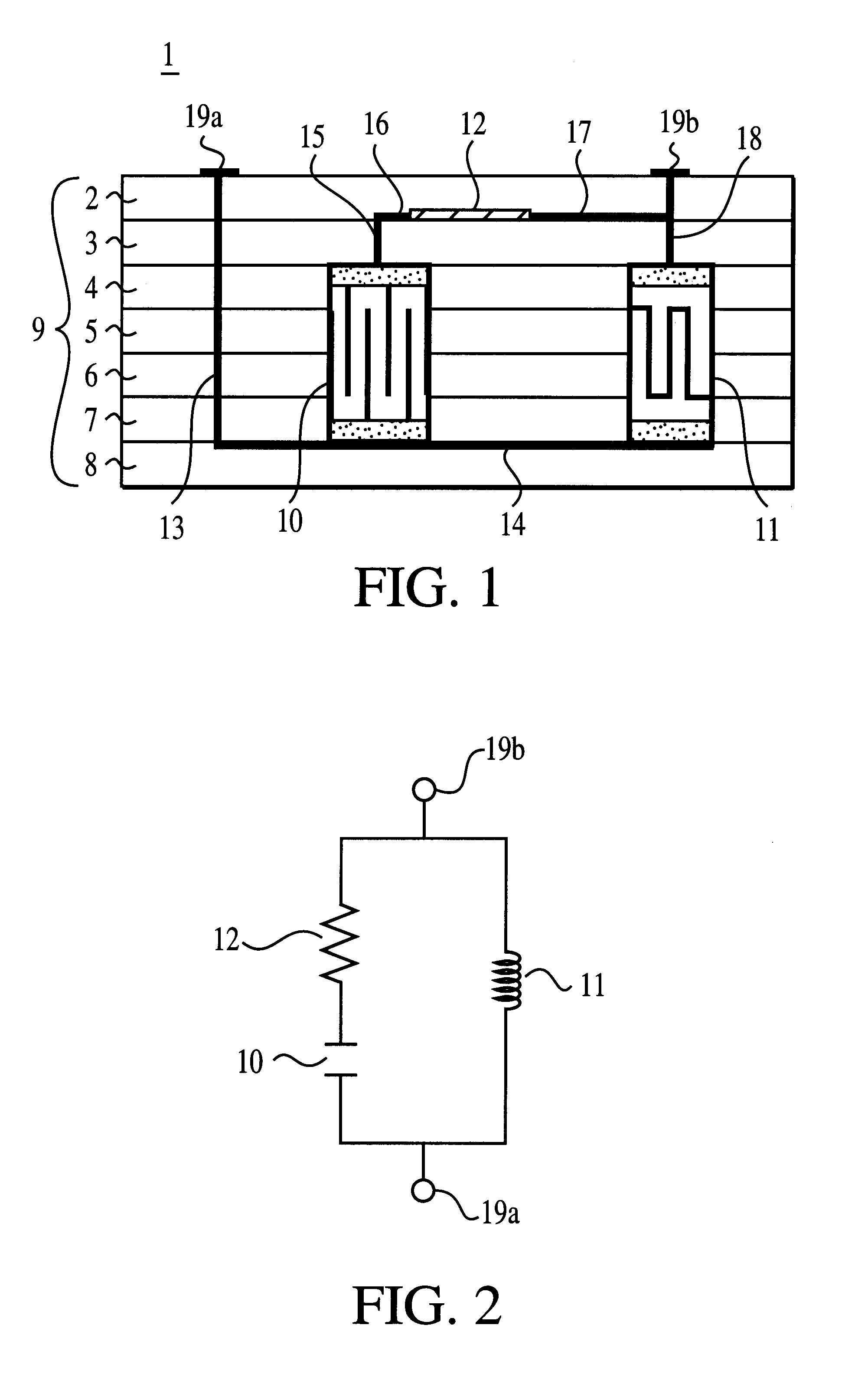Method of producing a multi-layer ceramic substrate
- Summary
- Abstract
- Description
- Claims
- Application Information
AI Technical Summary
Problems solved by technology
Method used
Image
Examples
Embodiment Construction
FIG. 1 is a cross-sectional view schematically showing a multi-layer ceramic substrate 1 according to a first preferred embodiment of the present invention. FIG. 2 is an equivalent circuit diagram provided by the multi-layer substrate 1 shown in FIG. 1.
As shown in FIG. 1, the multi-layer ceramic substrate 1 comprises a laminated member 9 having a plurality of laminated ceramic layers made of a ceramic insulating material 2, 3, 4, 5, 6, 7 and 8. The laminated member 9 accommodates a capacitor 10, an inductor 11 and a resistor 12 as the passive components. Furthermore, the laminated member 9 accommodates wiring conductors 13, 14, 15, 16, 17 and 18 for wiring the capacitor 10, the inductor 11, and the resistor 12, and further, has external terminal conductors 19a and 19b on the outer surface. Accordingly, the multi-layer ceramic substrate 1 provides a circuit as shown in FIG. 2.
The multi-layer ceramic substrate 1 with the above-mentioned configuration can be produced as follows. FIG. 3...
PUM
| Property | Measurement | Unit |
|---|---|---|
| Time | aaaaa | aaaaa |
| Linear density | aaaaa | aaaaa |
| Angle | aaaaa | aaaaa |
Abstract
Description
Claims
Application Information
 Login to View More
Login to View More - R&D
- Intellectual Property
- Life Sciences
- Materials
- Tech Scout
- Unparalleled Data Quality
- Higher Quality Content
- 60% Fewer Hallucinations
Browse by: Latest US Patents, China's latest patents, Technical Efficacy Thesaurus, Application Domain, Technology Topic, Popular Technical Reports.
© 2025 PatSnap. All rights reserved.Legal|Privacy policy|Modern Slavery Act Transparency Statement|Sitemap|About US| Contact US: help@patsnap.com



